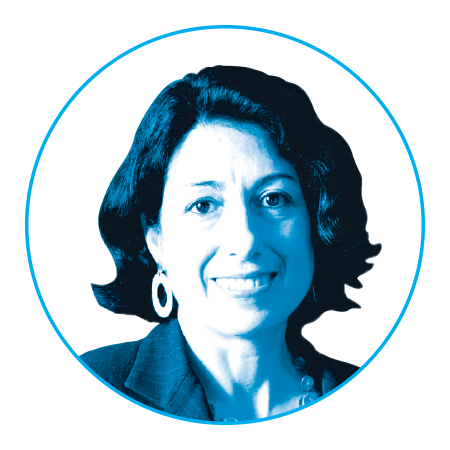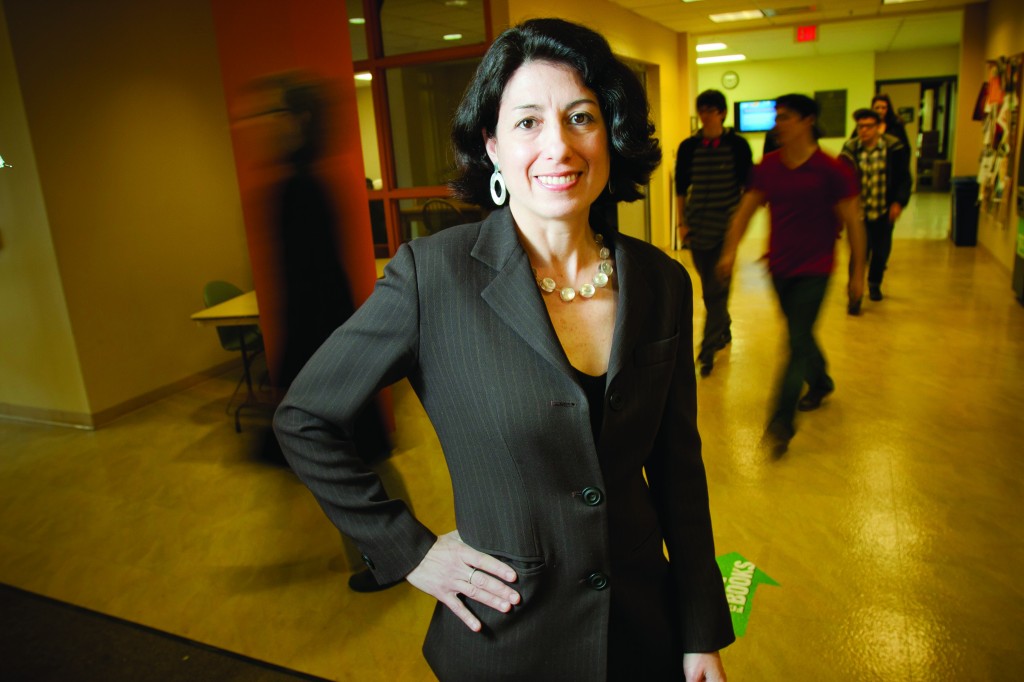
_Mimi Sheller
Sheller is director of Drexel’s Center for Mobilities Research and Policy and a professor in the College of Arts and Sciences.
Mimi Sheller examines how people move, how mobile communication changes how people move and how new systems of mobility can actually create immobility. It’s no wonder, then, that she’s designed Drexel’s Center for Mobilities Research and Policy (mCenter) to cross boundaries within disciplines and within Drexel. As the founding director of the mCenter, she works across the university and across nations to better understand these mobilities, which she defines as “the large-scale movements of people, objects, capital, and information across the world, as well as the more local processes of daily transportation, movement through public and private space, and mobile communications.”
In January, Sheller was invited to Tokyo by World Bank to share her expertise and work with an international team of experts seeking to draw out lessons from the 2011 Japanese earthquake and tsunami for disaster preparedness planning.
What brought you to Drexel?
After helping to found mobilities research at Lancaster University in the UK, I came back to Philadelphia, where I’m from originally, with the idea of bringing mobilities research, which was really taking off in Europe, into a U.S. academic context. Drexel had a very forward-looking interest in interdisciplinary fields that could draw together its different colleges and schools.

Mobilities research intersects with engineering around infrastructure and sustainability, with The iSchool at Drexel around issues of information technology, with the College of Arts and Science with the interest in social issues, with Westphal and issues of design interfaces, and with the School of Public Health around health and access concerns. I saw how it could help build those bridges within Drexel and also bring valuable connections to existing international contacts and networks outside of the U.S.
Who are you working with?
I recently worked on a very exciting project funded by the National Science Foundation (NSF) on post-earthquake Haiti with colleagues in the department of civil and environmental engineering. It was a project on participatory engineering—how local knowledge could be mobilized in the post-earthquake situation to work with people there on their water and sanitation needs. There is a real movement in engineering to involve communities in infrastructure decisions, which connects engineering to social science. We are now collaborating on further funding applications on green infrastructure, water and sustainability and climate change.
I’m also co-leader of a research initiative on “Augmented Philly,” which will form part of the new Expressive and Creative Interaction Technologies Center (ExCITe) under the direction of Youngmoo Kim and Adam Fontecchio from the College of Engineering. We hope to get NSF funding to develop a city-wide collaborative project to develop new mobile interfaces and interactive technologies for social connection and civic engagement with urban neighborhoods through innovative forms of public art and mobile gaming. Potential partners include Breadboard and NextFab at the Science Center; the Center for Creative Economy at University of the Arts; the Philadelphia Game Lab; and Azavea, a local software development company.
Is that how you became involved with the World Bank in addressing disaster preparedness?
After we did the project in Haiti, the Earthquake Engineering Research Institute (EERI) invited us to a workshop they had organized on behalf of the NSF to review all of the teams that had worked in post-earthquake Haiti. They asked me to co-chair the meeting in October 2010, about nine months after the earthquake. This year the World Bank invited the EERI to bring a team of international experts to Tokyo to work with a Japanese team on lessons learned from the 2011 earthquake and tsunami. Specifically, the World Bank wanted lessons for developing countries. They invest a lot of program funding in development projects, and they realized that development needs to take disaster preparedness into account, especially in these days of climate change and severe weather events. Large-scale development projects can be impacted by disaster, and countries can use development planning and funding to help prepare for floods and hurricanes and tsunamis and droughts—whatever disaster might strike.
“There is a real movement in engineering to involve communities in infrastructure decisions, which connects engineering to social science.”
A team of 12 of us—four from the U.S., including myself—went to Tokyo and had an amazing set of sessions with representatives from the World Bank, the Japanese government, and Japanese NGOs that had been involved in disaster response. They presented a lot of information on what they had learned, and we advised them on translating that into something useful for developing countries.
The final version will be presented at the World Bank/International Monetary Fund (IMF) annual meeting in Japan in October. At that meeting the report will go out to all the member states of the IMF and the World Bank so that they incorporate these lessons into future development.
How can someone learn more about the mCenter?
We sponsor a Mobility Visiting Speaker Series, which is open to the public, and I always welcome suggestions for speakers to invite. Follow our blog at mCenterDrexel.wordpress.com, mCenter @ Drexel on Facebook, or @mCenterDrexel on Twitter, to get involved.

